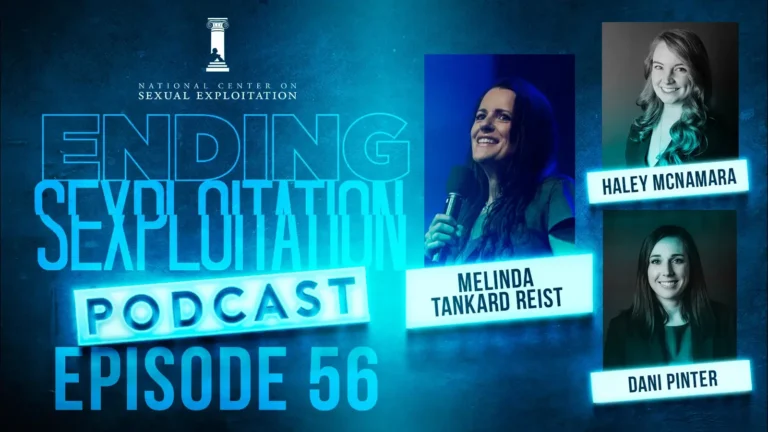Pornography is not a new issue. However, with the rise of the Internet in the 20th century, obtaining pornography only requires a simple Google search. Sometimes it doesn’t even take any effort at all, as Internet users frequently stumble upon it by accident on social media or with unrelated online searches. The fact of the matter is this: it has never been easier to get hardcore porn in a matter of seconds.
Liz Walker, a global leader educating on the harms of pornography and author of a groundbreaking curriculum Critical Porn Analysis, encourages individuals to examine pornography through five different lenses in order to help them understand how it impacts themselves and others. Once reviewed in this way, people can make more informed decisions about their use of pornography and holistic approaches to prevention, intervention, and healing will be more easily reached.
Critical Porn Analysis was created after mounting research demonstrated a number of public health harms related to pornography. The goal of Critical Porn Analysis is to educate individuals, families, communities and society about how pornography impacts their health and wellbeing.
The Global Industry of Pornography
 The first lens we are encouraged to view this issue through is an understanding of how the pornography industry is really a global industry. In order to understand how pervasive pornography is, one must understand the business driving it. This lens asks the questions:
The first lens we are encouraged to view this issue through is an understanding of how the pornography industry is really a global industry. In order to understand how pervasive pornography is, one must understand the business driving it. This lens asks the questions:
- “How has the porn industry normalized consumption of its product?”
- “How does the industry commodify human sexuality and desires?”
- “How does the industry use PR and media to promote their wares and manage the image of its product?”
These questions look at the industry as a whole from a macro perspective, which is essential for understanding its affects in society. For more information on the business side of the pornography industry, check out this article where Jennifer Johnson breaks down the business model of the porn industry.
Sex, Gender, Power, and Relationships
The second perspective to through which to look at the porn industry relates to sex, gender, power, and relationships. In your discussions with others, consider these questions:
- “How does porn shape people’s fantasies, sense of gender and sexual identity, relationship expectations, behaviors, and treatment of others?”
- “How does porn create or reinforce hyper masculinity and hyper femininity?”
- “How does porn impact commitment and relationship satisfaction?”
This perspective looks at how pornography reinforces antiquated and unequal gender roles and the harm that comes from that. Among a number of impacts to relationships, pornography sometimes reinforces people’s negative body image and increases performance anxiety about having sex with their partner.
Sexual Exploitation
The third lens through which to view the pornography industry is sexual exploitation. Consider the following points when taking the time to see how the pornography industry reinforces/fuels/facilitates sexual exploitation:
- “how [does] porn promote the degradation and oppression of women, same-sex attracted, gender diverse, and people of color?”
- “how [does] porn consumption fuel trafficking of women and children?”
- “how [does] porn normalize rape, sexual harassment, hate slurs and ‘revenge porn’?”
When looking at these questions, for example, many realize that when someone watches pornography, he/she often becomes desensitized to sexual violence. Porn makes rape or other illegal activities seem socially acceptable and impacts users’ opinions on whether perpetrators of violent sex crimes are deserving of harsh punishment. It also grooms viewers into being more vulnerable to exploitation themselves. No one thinks about these effects when watching pornography, which is a big reason why Critical Porn Analysis wants to help individuals make more informed decisions on whether or not to let pornography into their lives.
Child Sexual Exploitation
The fourth channel discussed is child sexual exploitation. This lens encourages us to consider:
- “given the research on the impact of early exposure to porn, could children and young people’s exposure to pornography be considered sexual abuse in and of itself?”
- “[does] pornography groom children to be at risk for both online and offline exploitation?”
- “[does] toxic porn culture normalize[s] exploitation (e.g. sexting) amongst young people?”
As we evaluate these points when it comes to pornography, we are able to make personal and community-impacting decisions that will impact and perhaps help some of the most vulnerable members of our society: children.
Mental Health and Addiction

The last lens through which we are encouraged to analyze pornography is the impact it has on mental health and addiction. Questions like the following are helpful in your discussion:
- “what is the impact of pornography on the brain and arousal physiology when viewing ‘scenes’ and sex acts that are not part of most sexual relationships?”
- “what mental health conditions and arousal disorders are linked to porn use?”
- “what improvements to wellbeing occur after porn use stops?”
In recent years, science has shed much light on the addictive nature of pornography and the impact it has on users’ brains. Becoming aware of how one’s brain can actually change by watching porn is vital in communicating the seriousness of the public health impact and in helping others to make clear, informed decisions.
This comprehensive curriculum helps policymakers, parents, educators, and society at large to more fully understand just how pornography is impacting the user, those close to them, and society. Critical Porn Analysis helps us to understand more thoroughly the public health and social impacts of pornography.
As we become more aware of these problems, there must be collaborative work between “government & community leaders; mental health, medical & legal professions; educators; parents; child, youth, women, men & family advocates; activists & survivors; and digital technology experts” to form a holistic approach to tackling the issue of pornography and the harms it causes.



